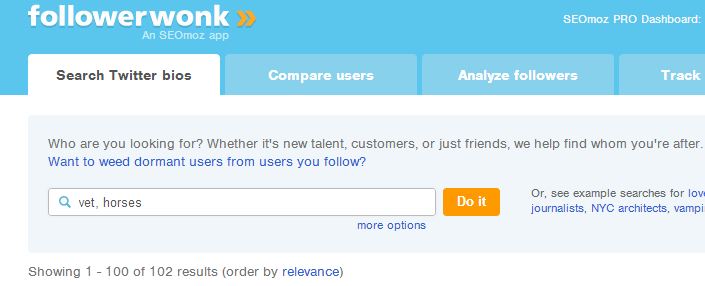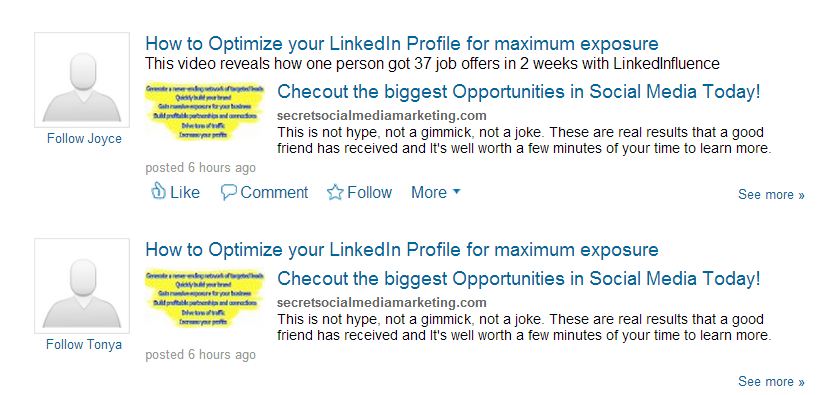Since the first iteration of the Panda update, the term link building has become a dirty word in the SEO industry, synonymous with forum posts, profile links and comment spam. Of course, nothing could be further from the truth. Google exists because links are the best way to quantify which sites are best for a given keyword phrase, and despite the advent of social media and Google Authorship as influential factors, that basic fact will never change.
That doesn't mean you can't leverage these same platforms to build links for your website. Each one of the 3.5 major (insert G+ joke here) social networks can help in this process, here is how:
We love using Twitter for prospecting. Companies and bloggers who tweet on a regular basis are more likely to be engaged, and as a result you hear back from them faster, and they are more likely to say yes, especially if you a great article for them to post.
- Search Twitter
This seems pretty self-explanatory, but use your "head" terms, as well as those you found using the method above. Make a list of accounts that are using those terms. Follow them from your alias account, and drop their info into Excel for later use.
- Search bio's
Followerwonk is great for this. Because of our unique challenges, we end up using the keyword in multiple languages. You also want to start prequalifying at this point as well by looking at user's websites. If you've created customer personas, they can be very helpful at this stage as well, because you can use them to find users who fit the criteria on which you based them.
For example we have a client whose products are for animals. Instead of just searching for the keyword, we know that reaching veterinarians is also crucial, so we use that terms related to them as well.
Google +
- Rinse and repeat. You can use this same technique for G+ using the GoogleWonk tool developed by Robert Baxter, and while it won't be effective for all niche's, it is always worth a shot.
Probably the most undervalued channel for link prospecting. If you've created an alias for your account, make sure to create a profile for them and join groups that are relevant to your target market. We always start with the head keyword terms, then look at the industry where the client operates, and finally focus on your potential customer industries.
For example, we work with a company that offers employee recognition software. First we would search for groups that talk about employee recognition and motivation. Since this is SaaS, and other companies that operate in this space (but aren't competitors) will be the quickest to see the value proposition, we'd look for SaaS groups in Latin America. Finally, since we created customer persona's we know that HR people are most likely be interested in this product, we would look for HR related groups.
Pro Tip: Create a LinkedIn profile at the very beginning of the project, since LinkedIn limits the number of groups you can join initially.
Pro Tip #2: Qualify the groups before you apply for entry. Make sure the groups have lots of active members. Of course some groups are not as well regulated and attract spammers, so before you join, check the actual posts to ensure that they are relevant to the name of the group (posts that offer Cheap Gucci Bags, or repeat the same posting from different profiles are a dead giveway).
Once you are in, monitor the posts and contribute relevant opinions. Post relevant articles no matter the author. Ask active members to become contacts. Once you have become a trusted member of these groups, start looking through people's profiles. If they have a blog (or even a company website), pitch them a guest post.
Pro Tip #3 Ask for help. Make sure that your question is specific and within the confines of group discussions, but people like to show off how much they know!
LinkedIn is also a great source for referral traffic, which in a way is just as good as links. Especially if you are in the B2B space it is an opportunity for you to speak directly to potential clients.
Of course everybody knows that the key to good marketing is to "Create Great Content". Since there are so many blog posts about this very subject, I'm going to assume that you are already doing this (which is important because some of these tactics hinge on it). Just in case, here is a great way to get new content ideas.
Using the Facebook Ad Creator to Find Content Ideas
This is not a new idea, but I so rarely see people using it, that it can't hurt to include it. Here is a step by step guide.
1. Go to the Ad Creator
Seriously, easy.
2. Choose your Audience
Since we work exclusively on Spanish SEO, we always add all the Spanish-language countries, especially those in Latin America.
3. Choose a keyword
It is best to use a head term because you will get more results. Here we chose "vitamin" and got two interesting results, Veganism and Adidas. There are so many blog posts that could come from that!
4. Write the post.
5. Share the post on Twitter and LinkedIn (and G+ too, I guess :P)
This can also be a great way to expand your keyword list by combining the terms to create long-tail search possibilities. Once you have some great blog posts, use the techniques we showed to place and promote it!
If you liked this post, you might also enjoy Link Building Demystified & Simplified: Learning How To Build Links

